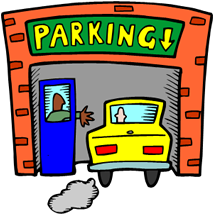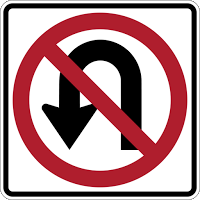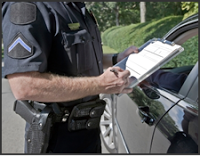Category Archive: Safe Driving

Parking Lot Safety
February 7, 2012
Finding a convenient and safe parking spot is as much a part of operating a vehicle as driving itself. Depending on the kind of parking situation, it can be as safe as being the only vehicle in that spot, or it might even prove to be more dangerous than the road itself.
Not all parking lots are created equal, even the parking spots don’t come in one flavor, hence the need for some parking lot safety tips.
Some parking spots may be a spot on the side of the road, or somewhere above a multi-tiered structure. Some spots may be straight-in, diagonal and some may not even have guiding arrows to help you. Paying attention plays a huge part in making sure you pick a perfect place to park.
Here are some of the necessary precautions when finding the perfect parking spot:
- Are the doors locked? Are the windows rolled up? Even if you’re leaving for a couple of minutes, you should always do this.
- As much as possible, don’t leave valuables in the car. Make it a habit: if you have the detachable type of GPS or radio, always bring it with you. GPS devices may make life easier, but if stolen, it gives thieves a treasure map to your house.
- Check your phone/plug in your earphones/do errands when you’re inside where you need to be. Your full attention is required in getting out of your car to getting to the destination.
- Is there parking security? If there’s an available spot within the view of security, park there. Not all parking lots are secure.
- Be wary of strangers loitering about the parking lot. The car may be parked, but they may be after you. Notify security if there’s anything out of the ordinary.
When your errands are complete, there are other precautions to be taken:
- Have your keys ready. Fumbling about and digging inside your purse or pocket for the keys in front of your car leaves you vulnerable.
- Always remember where you parked your vehicle.
- Scan the area around your vehicle. Be aware if someone may be following you.
- Check in and around your vehicle. Someone may be hiding behind your car, in front or in the back seat.
- Once safely in your vehicle, lock up and leave.
When backing out of a space, be aware of people or vehicles moving in front or behind your vehicle. Be aware that visibility may be limited when there are bigger vehicles parked next to you. Never put yourself at risk. A parking lot is just a place where you park, not to hang out in.
Additional Tips for Vehicle Theft Prevention from Department of Transportation’s (DOT) National Highway Traffic Safety Administration (NHTSA).

Making a Safe U-Turn
January 30, 2012
Intersection crashes cause the most number of fatalities more than any other crash location. Not only are they spots where red light runners might cause dangers, but also consider the fact that drivers making an innocent U-turn usually become involved if there ever was a crash.
What is truly important is: before making a U-Turn, make sure that you are aware of your state’s laws. Some states allow U-Turns at any intersection, unless there is a traffic sign that states: “No U-Turn Allowed”. There are other states that only allow for U-Turns when there is a “U-Turn Permitted” traffic sign. Almost all states do not allow U-Turns over double yellow lines painted on the road.
You may only make a U-Turn when the traffic light facing you is either a green arrow permitting a U-Turn, or a solid green light. Many people incorrectly assume that they can make a U-Turn while the light is red, even if their vehicle was a considerable distance from the center of the intersection. This is a violation, because doing so is still running a red light.
Here are some rules to making a safe U-Turn:
- Plan your U-Turn by looking for pedestrians or individuals riding bicycles. This means checking if you might hit someone or something when turning into the opposite direction.
- Always look in both directions before beginning your turn. If the light facing you has turned green, wait a second or two for possible red light runners coming from the opposite direction. This is the one tip that might save you the hassle of a crash.
- It’s a good idea to take your foot off the accelerator and moving it closer to the brake, should you need to stop, or when an emergency situation arises.
- If you have started your turn and the light changes, complete your turn as soon as traffic clears. Never try to back up in an effort to avoid blocking the intersection.
- It is important to note that you should always be making your U-Turn while you are at the left portion of the lane closest to the center line of the road. You are not allowed to make a U-Turn near the crest of a hill, a curve, or any other place where other drivers cannot see you from at least 500 feet away from the same direction.
U-Turns are the best way to get back to a location you missed, and making sure you know the right safety precautions while taking them assures you that you get there faster, and safer.

Mandatory Traffic School
January 11, 2012
Is mandatory traffic school truly mandatory? In most states, drivers who have been ticketed have the option of attending traffic school if they want the points for their driving infraction removed from their driving record. However, some states make attendance at traffic school mandatory for certain serious infractions. In Florida, a driver will be ordered to attend mandatory traffic school if he or she is guilty of infractions such as: running a red light, failing to stop for a school bus while its stop lights are flashing, racing on the highways, reckless driving, or simply if the driver is a repeat offender of a minor traffic violation.
If a driver is given a traffic ticket and found guilty of one of the listed violations, they will receive notice from the Florida Department of Highway Safety and Motor Vehicles of the requirement to attend a mandatory traffic school.
Here’s how one could satisfy the court’s requirements:
Find out what the court is exactly requiring you to do – Find out the deadline period of completion, find out where you could take your mandatory traffic school.
Look for a good traffic school – One that is court-approved. The student has an option of an online traffic school, or attending online traffic school, or the classroom traffic school.
Learn – Put in the effort to learn how to change your driving behavior. Thing is, driving school is a great way to refresh a driver’s knowledge on driving. It’s also a great way to learn new ways to change their driving behavior and prevent getting another ticket or worse, being involved in a serious collision.
Upon completion, submit your requirements to the court – The state allows 90 days for a driver to complete mandatory traffic school. Find the time to complete it, get the certificate of completion, and submit it to the court immediately.
Points are only removed if a student “elects” to go to traffic school.

Tips for Safely Changing Lanes During your Road Test
December 14, 2011
While taking your road test, the examiner may ask you to change lanes. Changing lanes is not a simple operation and the examiner will be looking to see if you follow all of the proper procedures to ensure that you change lanes safely.
Here are some tips on how to safely change lanes:
Assess the situation on the road ahead. Are there other vehicles trying to merge into your lane? Are there pedestrians ahead who are about to cross? Should you even change lanes? A big thing to look out for are vehicles in the lane you are about to change into flashing their brake lights or slowing down, it might indicate that there’s trouble in that lane and that changing lanes wouldn’t be worth it.
Use the rearview mirror to check motorists behind the vehicle. Check all of your mirrors before changing lanes. Is anyone behind you or in the far lane preparing to move into the lane you want to enter? Are there vehicles speeding up to get in on the lane you’re trying to change into?
Make a habit of always signaling other drivers about what you’re about to do on the road. Letting other motorists know your intentions will keep both you and them safe. This is especially true for changing lanes – drivers behind you have to make their driving decisions based on what you do. Make a habit of always giving signals for everybody’s benefit.
Check your blind spot before moving in. Before changing lanes, quickly turn your head with your chin over your shoulder to check your blind spots. It’s amazing how quickly a vehicle can move up and totally disappear in your blind spot.
When it comes to intersections, only change lanes before or after passing them. Remember, it is illegal to change lanes within 100 feet before or after an intersection.
For more practice consider taking a simulated behind-the-wheel online prep course offered through OfficialDMV.com.

Teen Passengers of Teen Drivers
October 18, 2011
As teen passengers in a car with a teen driver, would you or could you ask the driver to:
- stop texting,
- stop talking on a cell phone,
- buckle up,
- not drink and drive,
- slow down, or;
- pay more attention to the road ahead?
All of these activities are dangerous yet teen passengers of a teen driver seem to be reluctant to ask the driver to drive more safely and they pay dearly as a result.
Car crashes are the leading cause of death for teens and more than half of the teens killed in car crashes each year are passengers of another teen driver. A study by The Children’s Hospital of Philadelphia found that 60 percent of teens think inexperience heavily influences safety, but only 15 percent consider their peers to be inexperienced. Apparently, teens equate experience with the ability to pass the driving test and earn a license rather than time on the road and exposure to a variety of driving situations.
A recent study by the AAA Foundation for Traffic Safety, showed that teen drivers are about 50 percent more likely to crash in the first month of unsupervised driving than they are after a full year of experience driving on their own, and they are nearly twice as likely to crash in their first month as they are after two full years of experience.
Distracted driving is one of the leading causes for crashes among all age groups but it is especially high among teen drivers. Teen passengers add to the distractions and the risk of a crash increases with each additional teen passenger yet only 10 percent of teens realize that carrying teen passengers increases the risk of a crash.
Another factor leading to teen passenger deaths is that teens have the lowest rate of seat belt use and they are less likely to wear a seat belt when they are a passenger of another teen than when they are driving alone.
The website www.teendriversource.org, has produced an informational brochure called “Teach Your Teen To Be A Smart Passenger”. Parents continue to be the strongest influence in a teen’s life and, by setting strong rules for teens, both as a driver and a passenger, they can help prevent some of the dangerous situations that teens are prone to get into.
